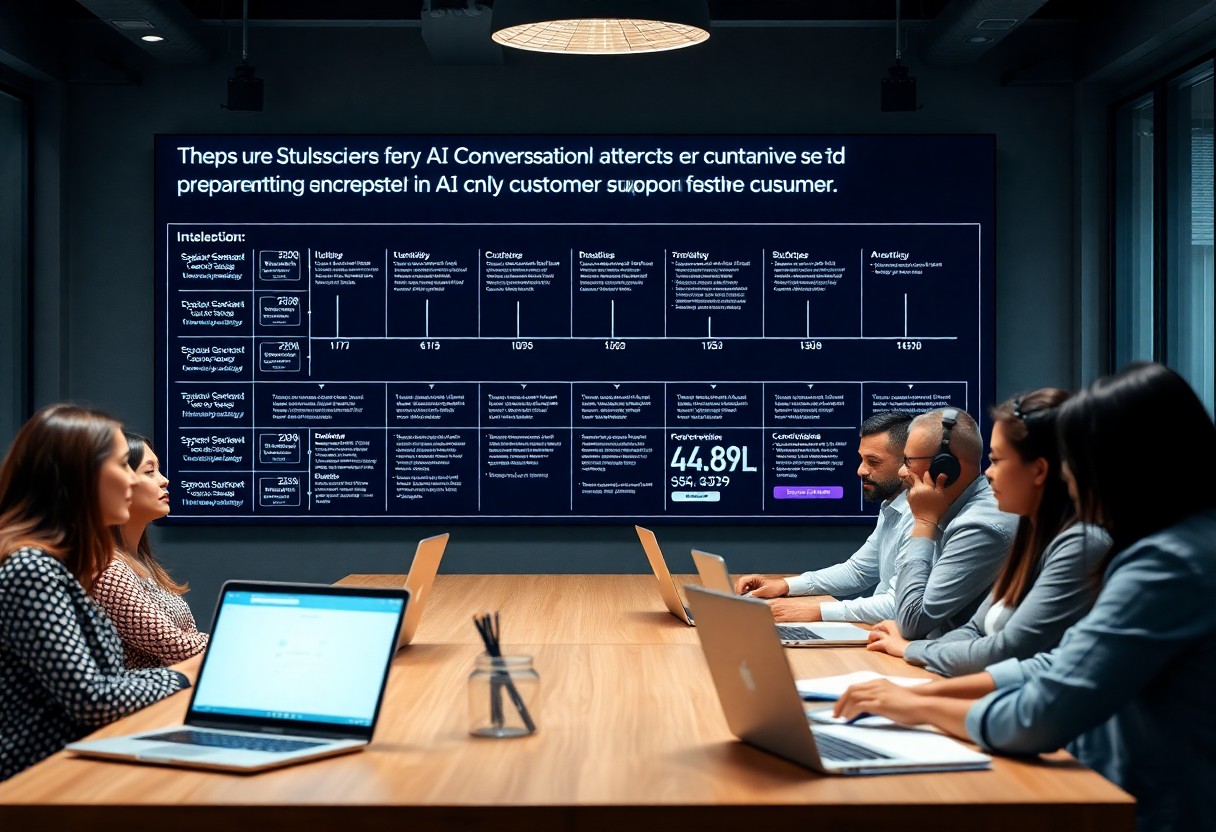
How SMBs Can Leverage Predictive Analytics to Reduce Customer Churn.
There’s a growing reliance on data-driven insights for small and medium-sized businesses (SMBs) looking to enhance customer retention. By implementing predictive analytics, you can identify patterns in customer behavior, anticipate potential churn, and take proactive measures to keep your clients engaged. This blog post will guide you through effective strategies that harness predictive analytics, enabling you to transform your customer relationships and ultimately improve your business’s bottom line.
The Data Goldmine: How SMBs Can Collect Actionable Customer Insights
Harnessing the potential of customer data transforms your business decisions. By tapping into various data sources, you can uncover patterns and behaviors that lead to churn. Collecting actionable insights allows you to understand your customers better, enabling tailored strategies for retention and growth. Through effective data management, you can create not just a reactive approach but a predictive one that anticipates customer needs and preferences.
Identifying Valuable Data Sources
Your first step lies in pinpointing where the most impactful data resides. Sources like customer surveys, transaction history, social media interactions, and CRM systems are rich in information. Additionally, web analytics can reveal how users navigate your site, highlighting potential drop-off points or products that capture their interest. By focusing on these channels, you develop a comprehensive view of customer behavior.
Strategies for Effective Data Collection
Establishing a systematic approach to data collection enhances the quality and depth of your insights. Begin by integrating various tools, such as survey platforms and CRM solutions, to streamline data gathering. Regularly solicit feedback through targeted surveys and use automated systems to capture behavioral data across digital platforms. Combining these insights with analytics tools enables you to visualize trends and identify key factors influencing customer churn.
Effective data collection strategies involve creating a persona-focused framework to guide your information-gathering efforts. Use tools like Google Analytics and CRM integrations to monitor user engagement extensively. Implement automation for routine survey invitations, ensuring steady feedback that keeps you attuned to customer sentiment. Engage with your audience on social media to collect qualitative insights that offer depth beyond quantitative metrics. By diversifying data channels and adopting a consistent review process, you can refine your retention tactics aligned with genuine customer preferences.
Decoding Customer Behavior: Using Analytics to Predict Churn
Understanding customer behavior is pivotal in predicting churn rates effectively. You can identify patterns and signals that indicate a likelihood of attrition by analyzing purchasing habits, engagement levels, and feedback. A comprehensive view of customer interactions allows you to pinpoint at-risk segments, enabling proactive measures to retain them and enhance overall loyalty.
Key Metrics and Indicators to Monitor
Focus on metrics such as Customer Lifetime Value (CLV), Net Promoter Score (NPS), and churn rate itself. Monitoring engagement frequency, purchase frequency, and average order value helps you gauge customer satisfaction and predict potential drop-offs. Segmenting data by demographics or behavior can reveal targeted insights that guide your retention strategies.
Tools and Techniques for Predictive Modeling
Various tools and techniques can streamline predictive modeling for customer churn. Leveraging customer relationship management (CRM) systems, machine learning algorithms, and data visualization platforms enables you to analyze historical data effectively and forecast future trends. Tools like Google Analytics and Tableau can transform raw data into valuable insights.
Popular predictive modeling techniques include decision trees, regression analysis, and clustering algorithms, which can dynamically analyze customer data. For example, employing algorithms like logistic regression can help determine the probability of a customer churning based on previous behaviors. Utilizing platforms like Salesforce or HubSpot alongside R or Python for modeling can enhance your predictability and accuracy, turning raw data into actionable insights to refine your customer engagement strategies.
Transforming Insights into Action: Strategies to Mitigate Churn
Leveraging analytics doesn’t stop at prediction; it requires actionable strategies that directly address customer needs and concerns. By translating insights into concrete actions, you can effectively engage customers and reduce churn. Prioritize understanding specific pain points and satisfaction levels among different segments of your customer base, then implement tailored strategies that address these factors.
Personalized Engagement Tactics
Personalization enhances the customer experience and fosters loyalty. Use the insights gathered from predictive analytics to create targeted marketing campaigns, customized communication, and tailored offers. For example, sending personalized discounts based on past purchasing behavior can significantly increase customer retention. Engaging customers through their preferred channels also strengthens relationships and builds trust.
Proactive Retention Strategies
Implementing proactive retention strategies involves anticipating issues before they escalate. Use your analytics to identify customers at high risk of churning and develop interventions tailored to their specific needs. For instance, if data shows a decline in engagement, initiate outreach to re-engage them through surveys or exclusive offers. The goal is to create solutions that prevent dissatisfaction and reinforce the value of your product or service.
For example, a SaaS company identified a segment of users who stopped logging in regularly. By analyzing usage patterns, they discovered a lack of feature adoption. Reaching out with personalized onboarding sessions and targeted content led to a 35% increase in customer engagement and a noticeable decline in churn rates. Whether through enhanced support or targeted outreach, being proactive about retention can create a more loyal customer base.

Building a Culture of Data-Driven Decision Making
Creating a culture that prioritizes data-driven decision-making empowers your team to leverage insights from predictive analytics effectively. This involves not just the adoption of tools, but also fostering an environment where data is integral to the strategy. Encourage open discussions around data outcomes, customer insights, and analytics to create a shared understanding of how informed decisions impact customer retention and overall business performance.
Fostering Collaboration Between Teams
Encouraging collaboration between teams enhances the effectiveness of analytics initiatives. You should establish cross-departmental projects where sales, marketing, and customer service work together to dissect data and identify trends in customer behavior. Such cooperation leads to a unified approach to addressing churn, ensuring that all departments align their efforts towards a common goal of retaining customers.
Training Employees on Analytics Utilization
Investing in training programs focused on analytics utilization empowers employees to harness data effectively in their roles. By offering workshops and ongoing education, your team gains the skills necessary to interpret analytics, derive actionable insights, and implement strategies that reduce churn. This investment not only enhances individual capabilities but also drives collective success in customer retention initiatives.
Effective training on analytics utilization equips your employees with practical skills such as data interpretation, tool navigation, and segmentation strategies. Consider integrating real case studies where data-driven decisions have successfully mitigated churn, allowing teams to see theory in practice. Providing access to analytics tools and hands-on exercises will further solidify learning and ensure your employees feel confident in their ability to apply analytics to real-world scenarios. Monitoring progress and offering regular feedback can enhance these training initiatives, creating a workforce that is not only data-savvy but also motivated to use analytics to improve customer outcomes continuously.
Real-World Success Stories: How SMBs Are Winning with Predictive Analytics
Profiles of Innovative SMBs
Many SMBs have successfully harnessed predictive analytics to enhance customer retention. For example, a local fitness studio implemented predictive models to identify members likely to drop out. By proactively engaging these individuals with personalized offers, they reduced churn by 25% within six months. Similarly, a regional coffee shop chain analyzed purchase patterns and adjusted their loyalty programs accordingly, resulting in a 30% increase in repeat visits.
Key Takeaways from Successful Implementations
Success stories illustrate key strategies SMBs can adopt in their journey with predictive analytics. First, establishing a clear goal for customer retention drives focused efforts. Utilizing real-time data allows for rapid adaptability in marketing approaches. Engaging customers based on their predicted behavior enhances satisfaction and loyalty.
Implementing predictive analytics effectively requires a data-driven mindset. Start by defining clear metrics for success to gauge the impact of your initiatives. Investing in the right tools for data collection and analysis streamlines this process, enabling real-time insights. Regularly revisiting and recalibrating your models based on new data ensures that your strategies remain relevant, ultimately leading to sustained improvements in customer retention and reduced churn rates.
Final Words
To wrap up, utilizing predictive analytics can significantly enhance your ability to reduce customer churn by allowing you to identify behavior patterns and anticipate customer needs. By analyzing data related to customer interactions and preferences, you can implement targeted strategies that increase engagement and satisfaction. Embrace these insights to fine-tune your offerings and proactively address potential issues, ensuring your customers remain loyal and satisfied with your services.


